Xiaomi Redmi Note 11 Pro vs Realme 9 Pro+: Which budget 5G phone is best?
We pit two of the best budget phones against each other — find out which is best
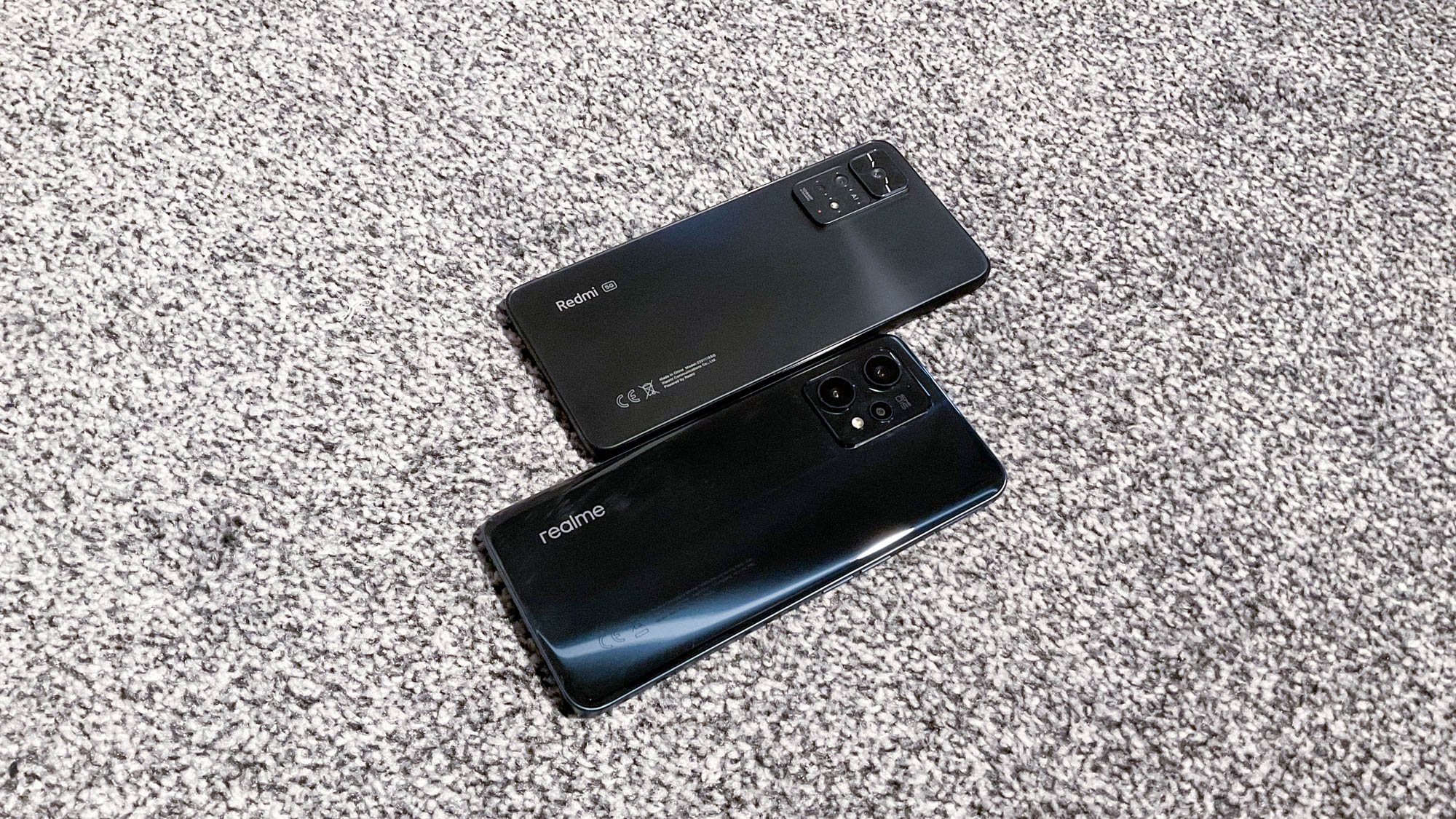
The budget smartphone industry is smashing it these days. With 5G connectivity, capable processing power, and beautiful AMOLED displays churning out refresh rates up to 120Hz at surprisingly affordable price tags, these dark horses put into question the oft-exorbitant cost of flagship phones.
These are the smartphones that step into the ring against the likes of Floyd “Apple” Mayweather or Mike “Samsung” Tyson and surprise roaring crowds by rope-a-doping the lot. Currently, the two Android phones knocking out their competition with swift right hooks are the Xiaomi Redmi Note 11 Pro and Realme 9 Pro+ — both at the top of their game as the best budget smartphones to buy. However, in a bout of furious blows against each other, it’s difficult to decide who to place your bets on.
- Xiaomi Redmi Note 11 Pro 5G review: Now we’re talking
- Realme 9 Pro+ 5G review: Colour me impressed
- Best phone deals in 2022
With both smartphones priced below $400(£400), boasting bright and vivid AMOLED displays and bringing 5G into the fold, the Redmi Note 11 Pro and Realme 9 Pro+ are gearing up to swipe the lightweight champion belt (we’ll leave the heavyweight title to the likes of Apple and Samsung). Alright, enough boxing idioms. Find out which budget smartphone is best for you as we pit these exemplary Android phones against each other.
Xiaomi Redmi Note 11 Pro vs Realme 9 Pro+: Spec
| Row 0 - Cell 0 | Xiaomi Redmi Note 11 Specs | Realme 9 Pro+ Specs |
| Price | $329 (around £240) | £349 (around $358) |
| OS | Android 11/ MIUI 13 | Android 12/ Realme UI 3.0 |
| Display | 6.6-inch 120Hz FHD+ AMOLED DotDisplay | 6.4-inch 90Hz Super AMOLED |
| CPU | Qualcomm Snapdragon 695 5G | MediaTek Dimensity 920 5G |
| RAM | 8GB | 8GB |
| Rear cameras | 108MP wide (f/1.9), 8MP ultrawide (f/2.2), 2MP macro (f/2.4) | 50MP Sony IMX766 OIS wide (f/1.8), 8MP ultrawide (f/2.3), 2MP macro (f/2.4) |
| Front camera | 16MP (f/2.4) | 16MP (f/2.5) |
| Storage | 128GB | 128GB |
| Battery | 5,000mAh | 4,500mAh |
| Size | 6.4 x 2.9 x 0.3 inches | 6.2 x 2.8 x 0.3 inches |
| Weight | 7.1 ounces | 6.4 ounces |
Xiaomi Redmi Note 11 Pro vs Realme 9 Pro+: Price
The Redmi Note 11 Pro 5G with 8GB of RAM and 128GB of storage is priced at an incredibly low $329 in the U.S., which works out to be around £245 in the U.K. That’s astounding, even when comparing it to some of the other top budget smartphones on the market today. To put its price into perspective, you could grab three Redmi Note 11 Pros ($987) and it would still be cheaper than the base model iPhone 13 Pro ($999).
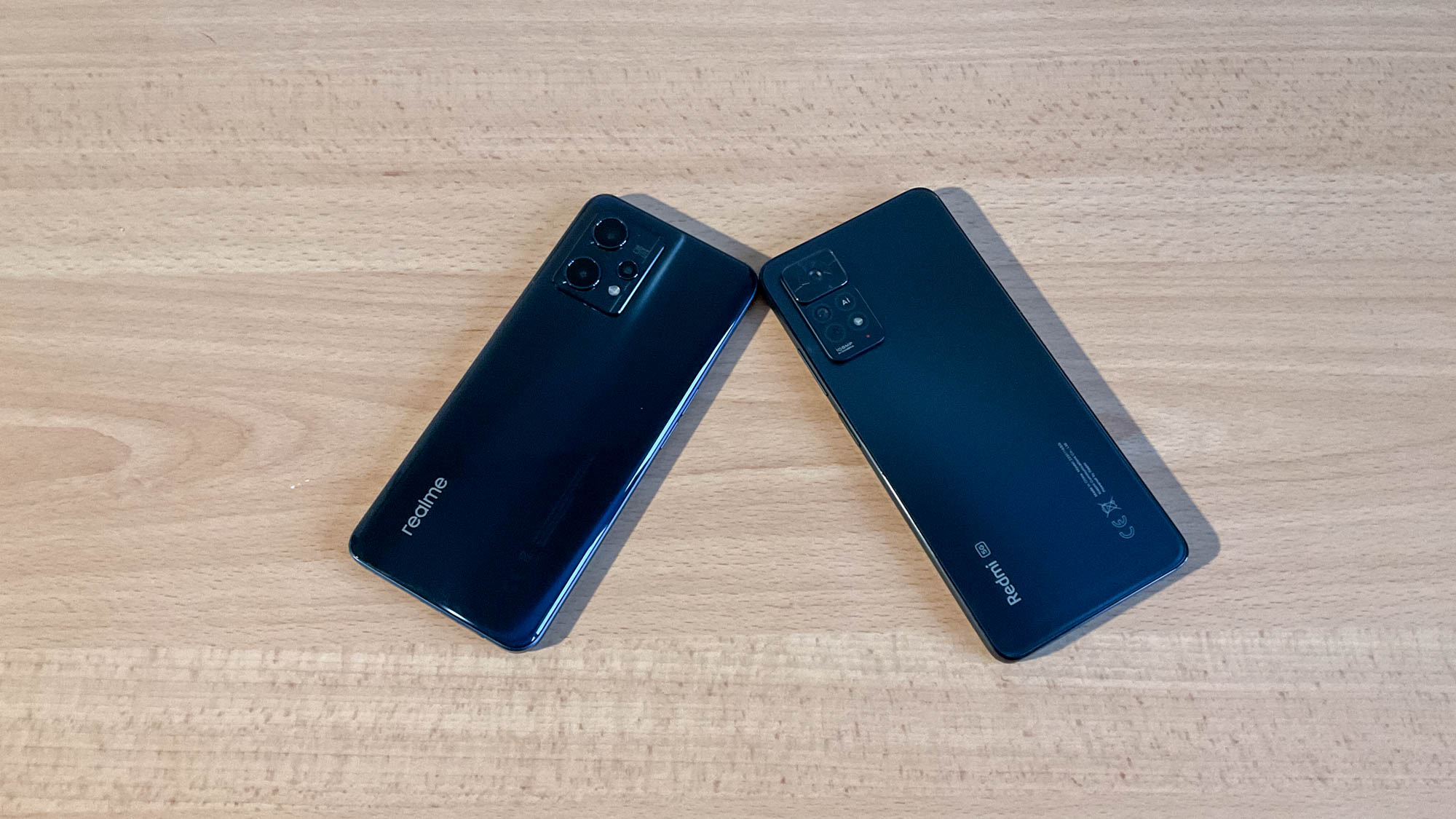
The Realme 9 Pro+ is the priciest of the budget 9 series lineup, which will set you back £349 with 8GB of RAM and 256GB of storage. For a limited time, however, it’s available for just £299. This deal initially was meant to only last from March 4 to March 6, but there’s currently another deal running until March 21. It’s safe to say the Realme 9 Pro+ will frequently have deals taking £50 off the price tag. Realme doesn’t trade in the U.S., so this is one for those in the U.K. and Europe for now. However, converting to the U.S. dollar, the phone would cost around $391.
Compared to their competition, including the new $429/£419 iPhone SE (2022), £399 (around $530) OnePlus Nord 2, and $499 TCL 20 Pro 5G, both smartphones are more affordable choices. Clearly, the Redmi Note 11 Pro is the cheaper option, although it has half the storage of the base 256GB Realme 9 Pro+. There’s around a $80/£60 price difference, and while the Realme offers more storage, the Redmi boasts a larger 5,000mAh battery capacity and a smoother 120Hz display.
The Redmi Note 11 Pro 5G takes the win, as it offers better value for money while still having a respectable 128GB of storage.
Winner: Xiaomi Redmi Note 11 Pro 5G
Xiaomi Redmi Note 11 Pro vs Realme 9 Pro+: Design
Design plays a significant factor in choosing a smartphone, and by look and style alone, the Realme 9 Pro+ is the fancier model on the catwalk. On the other hand, by form and function, the Redmi Note 11 Pro gets the upper hand.
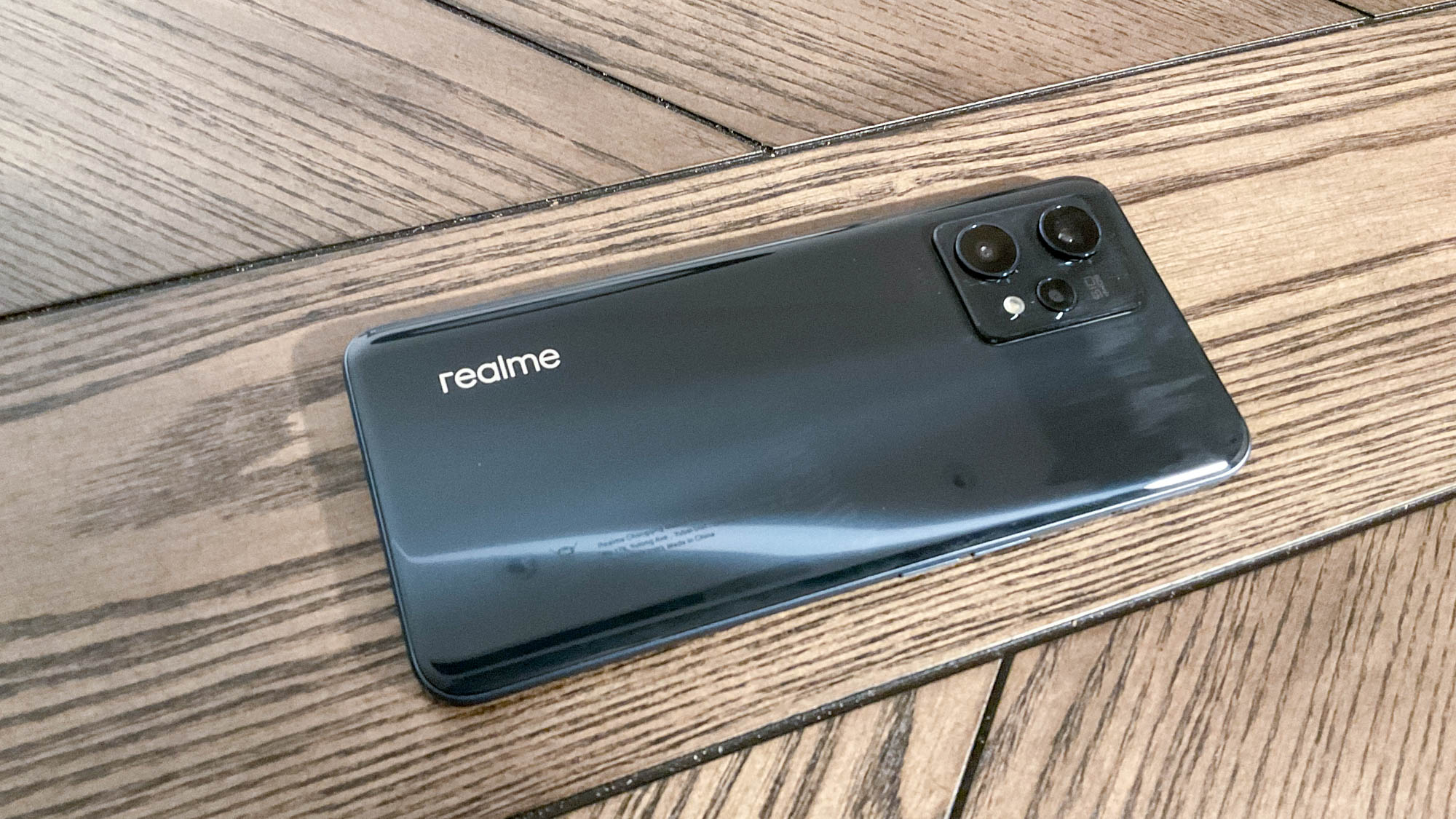
Thanks to a “three-layer process” used on the back cover, the Pro+ creates a nifty shining effect with a vibrant vertical beam that gleams from every angle. It brings a more polished, flagship look to an otherwise budget smartphone. In our review, I stated that I was a fan of the glint, but the back cover is slippery, meaning it could be prone to falling off surfaces if it's placed on any sort of angle.
The Realme 9 Pro+ also comes in three colors: Midnight Black, Aurora Green and Sunrise Blue. That last one is the star of the show; it’s Realme’s first “Chameleon” smartphone, changing color from blue to red under sunlight or ultraviolet light. It’s also the company’s slimmest smartphone to date at 0.3 inches thick and weighing a light 6.4 ounces.
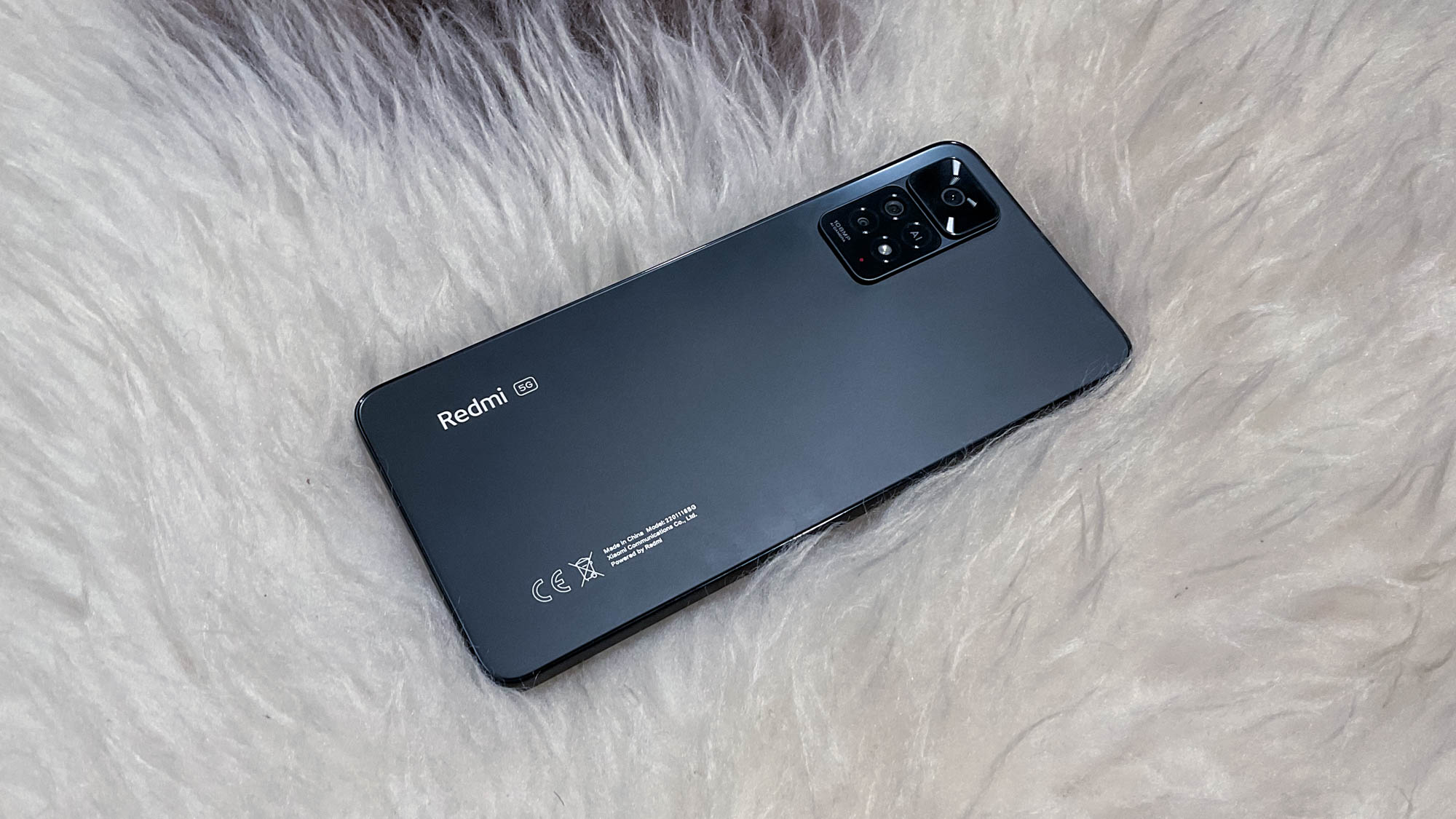
As for the Redmi Note 11 Pro, Xiaomi doesn’t do much to make its somewhat brick-ish phone stand out in the sea of Android phones. However, it has a formidable yet subtle flagship charm to it, sporting a classy shine even in its standard Graphite Gray. It also comes in a more appealing Atlantic Blue and Polar White. Despite being far from the most stylish phone out there, its smooth rounded edges, small centred hole-punch camera, and handy fingerprint sensor (embedded in the power button at the side of the phone) make it easy to handle.
The Realme 9 Pro+ places its hole-punch camera on the top-right of the display, and while it's bigger than Redmi’s, the placement is more visually pleasing on the display. The camera layout on the Realme — akin to the iPhone 13 — is also more attractive, while the Redmi sticks to a bland, quad-lens formation with a noticeably huge lens on top.
In terms of size, the Redmi measures 6.4 x 2.9 x 0.3 inches and weighs 7.1 ounces, which is considerably heavier and bigger than the Realme, but both phones are just as thin at 0.3 inches.
Get The Snapshot, our free newsletter on the future of computing
Sign up to receive The Snapshot, a free special dispatch from Laptop Mag, in your inbox.
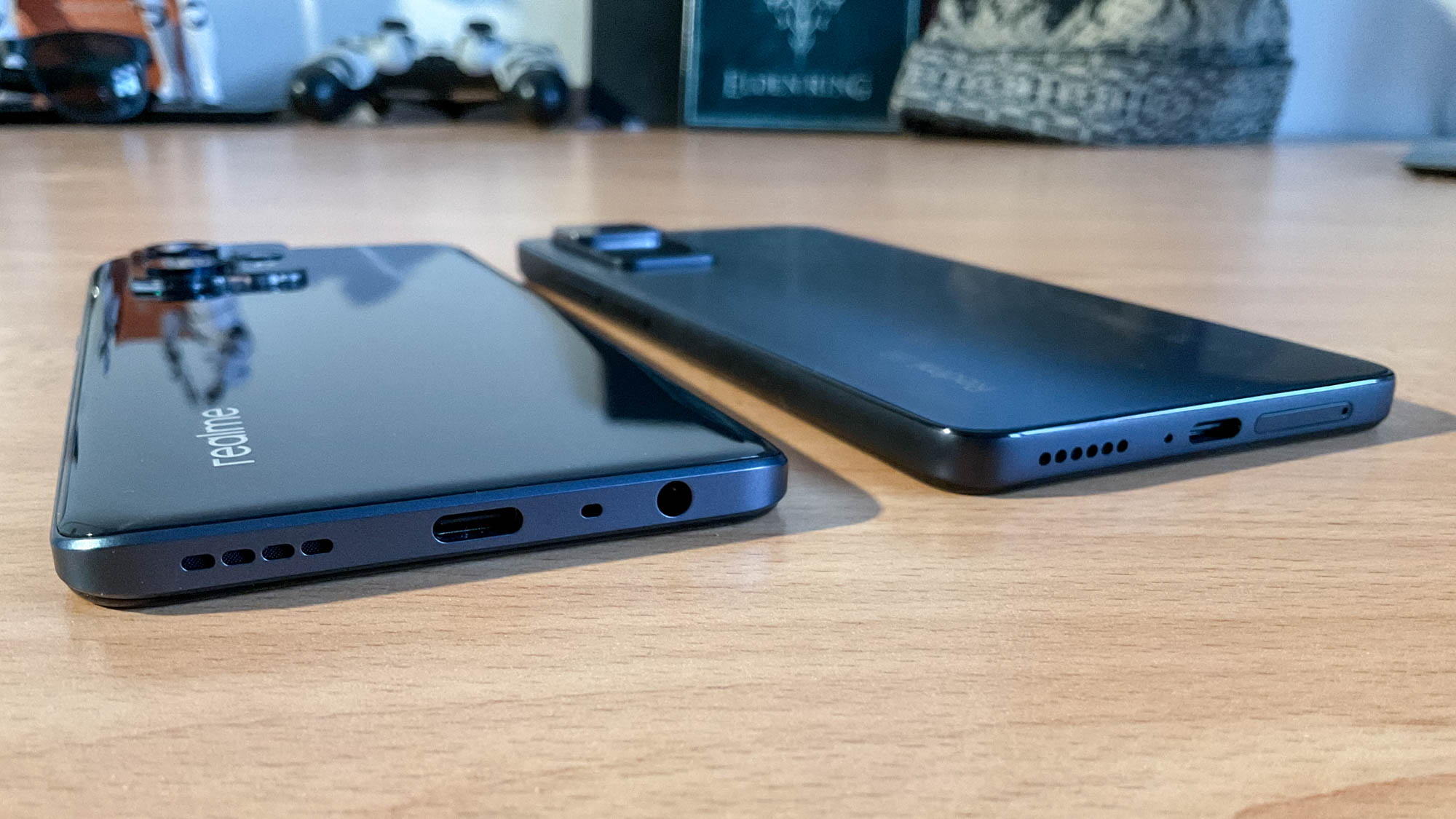
Beauty is in the eye of the beholder, but the Realme 9 Pro+ is the smartphone I’d want to show off. While it may not be equipped with the Redmi Note 11 Pro’s handy side-button fingerprint sensor, it still comes with an under-display fingerprint sensor that can even measure your heart rate.
Winner: Realme 9 Pro+ 5G
Xiaomi Redmi Note 11 Pro vs Realme 9 Pro+: Display
Smartphones under $400 that are equipped with an AMOLED display are head-turners, which makes the Redmi Note 11 Pro’s 6.6-inch 120Hz FHD+ AMOLED DotDisplay and the Realme 9 Pro+’s 6.4-inch 90Hz Super AMOLED an absolute treat for budget phone customers. As you can tell, having a bigger screen with a 120Hz refresh rate on a cheaper phone means the Redmi takes the crown.
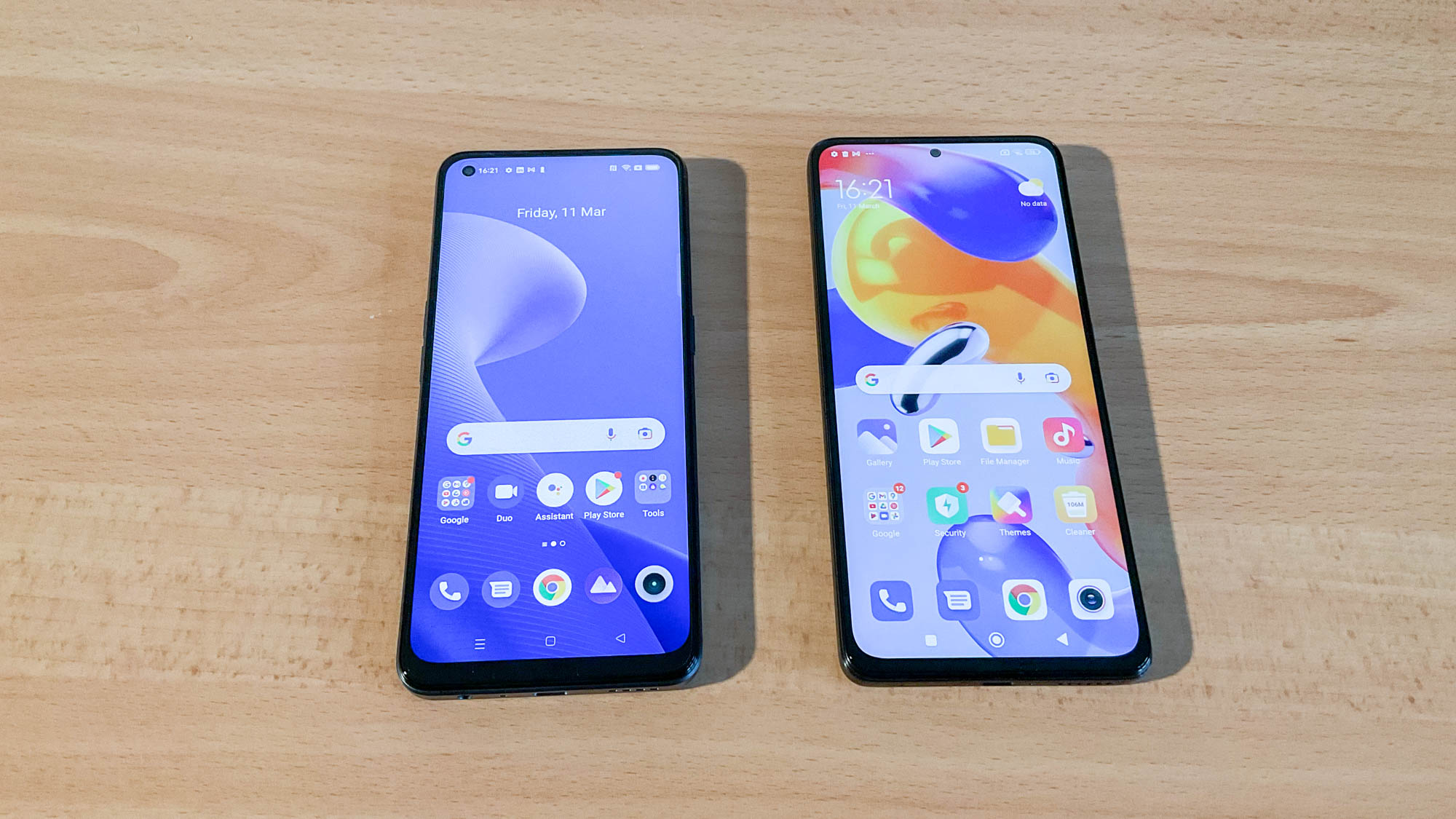
In practice, however, the Realme holds its own in the display department. I watched The King’s Man on Disney+, replaying the fight scene with Rasputin that saw him dance with swords aplenty. I was impressed by the dancing antics being caught in full motion on the display, with the phone capturing the ballroom’s warm and polished atmosphere as the two clashed swords. Anyone who likes viewing shows and movies on the move will be happy with what the Pro+’s AMOLED display delivers. Plus, the Realme’s video color enhancer, boasting SDR-to-HDR technology, makes colors pop.

That said, the Realme 9 Pro+’s detail isn’t as crisp as the Redmi Note 11 Pro’s. I watched Spike Jonze’s Her on Netflix, and I was completely engaged by the vibrant shades of red spotted throughout the movie. The Note 11 Pro does a great job at capturing the subtle details of the somewhat futuristic corporate world Theodore (Joaquin Phoenix) finds himself in, and it was a joy to watch on the 6.6-inch screen. The Redmi also has a “Vivid” option that adjusts colours based on the content being displayed.
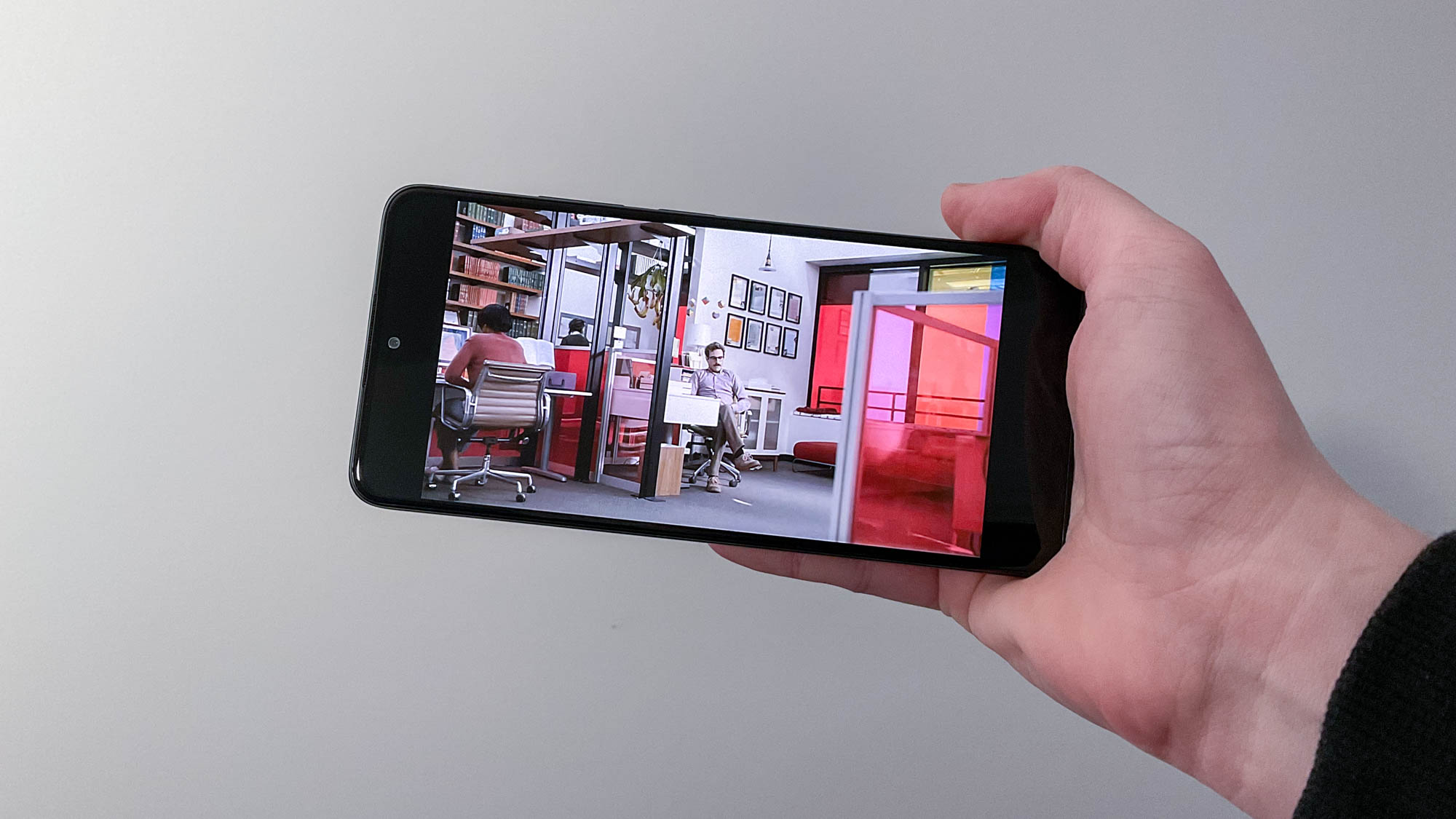
When scrolling through social media apps and articles online, there isn’t much difference between refresh rates in reality. Plus, with the Realme only going up to 90Hz, it’s less taxing on the phone’s battery. Still, when it comes to gaming, the Redmi comes out on top, as it allows for the highest available refresh rates in games such as Call of Duty: Mobile.
Both smartphones boast great displays for watching content, scrolling through apps and playing games, but the Redmi Note 11 Pro has an edge over the Realme 9 Pro+, thanks to its larger display and higher 120Hz refresh rate.
Winner: Xiaomi Redmi Note 11 Pro 5G
Xiaomi Redmi Note 11 Pro vs Realme 9 Pro+: Performance
The Redmi Note 11 Pro and Realme 9 Pro+ aren’t the powerhouses the modern flagship smartphones are, but they can impressively pull their own weight, especially for the price. For normal tasks such as opening multiple apps and tabs, you’d be surprised by how much they can handle. However, one chip outperforms the other.
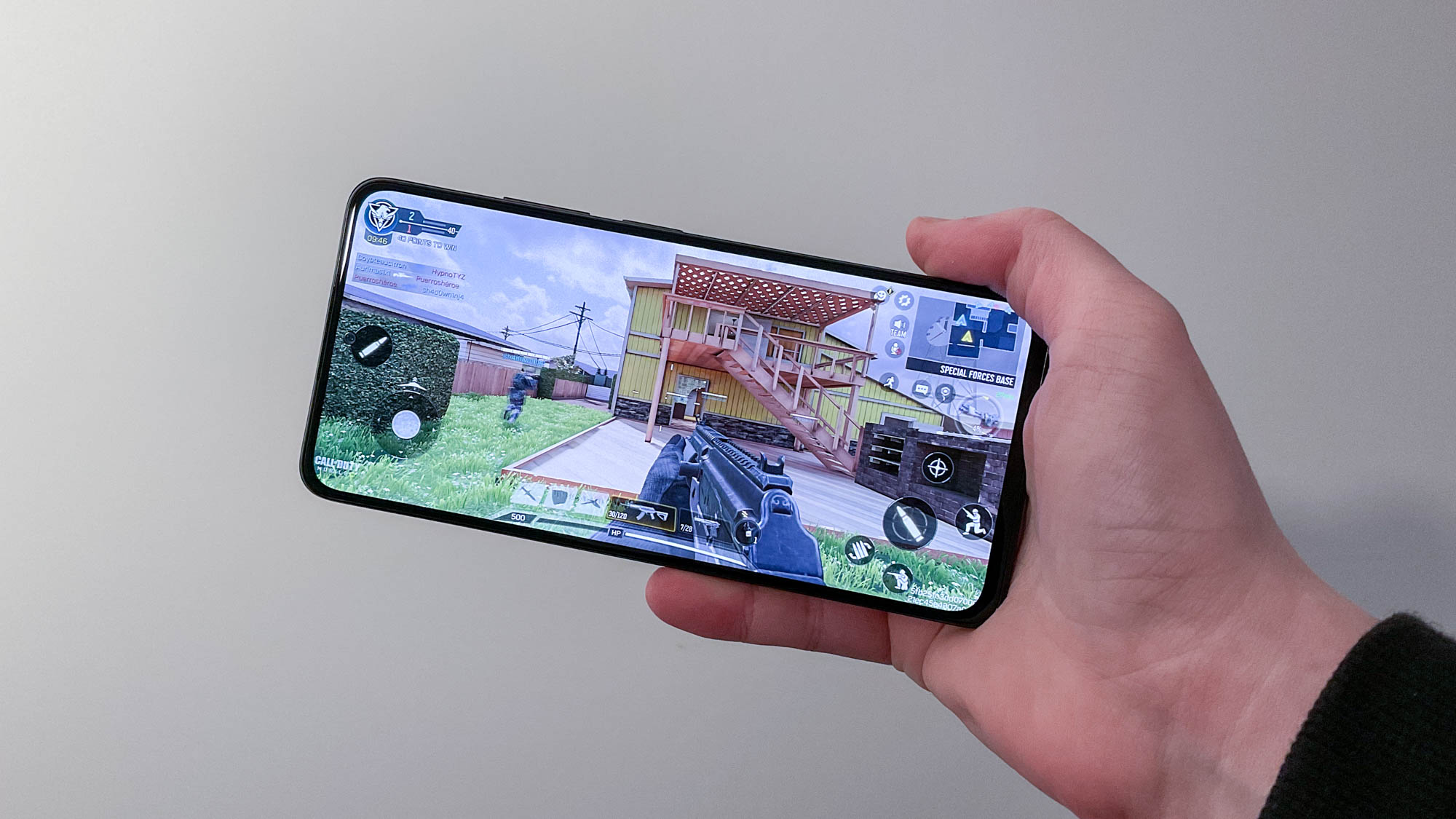
The Redmi Note 11 Pro comes with a Qualcomm Snapdragon 695 5G processor with a Qualcomm Adreno 619 GPU, 8GB of RAM and 128GB for storage. I tested its real-world performance, opening a couple of dozen active Google Chrome tabs while watching Her on Netflix in a small window. I also slipped between the Chrome tabs and Call of Duty: Mobile to see how fast it could switch between the two. Even when I had the Netflix window playing and another video running in a tab, I didn’t experience any slow down. However, the frame rate seemed to take a hit, as scrolling through a web page became more jittery. Once I hit the 24 tab mark, I did see a delay in other web pages loading up, but only by a couple of seconds. All in all, the Redmi Note 11 Pro has plenty of multi-tasking potential.
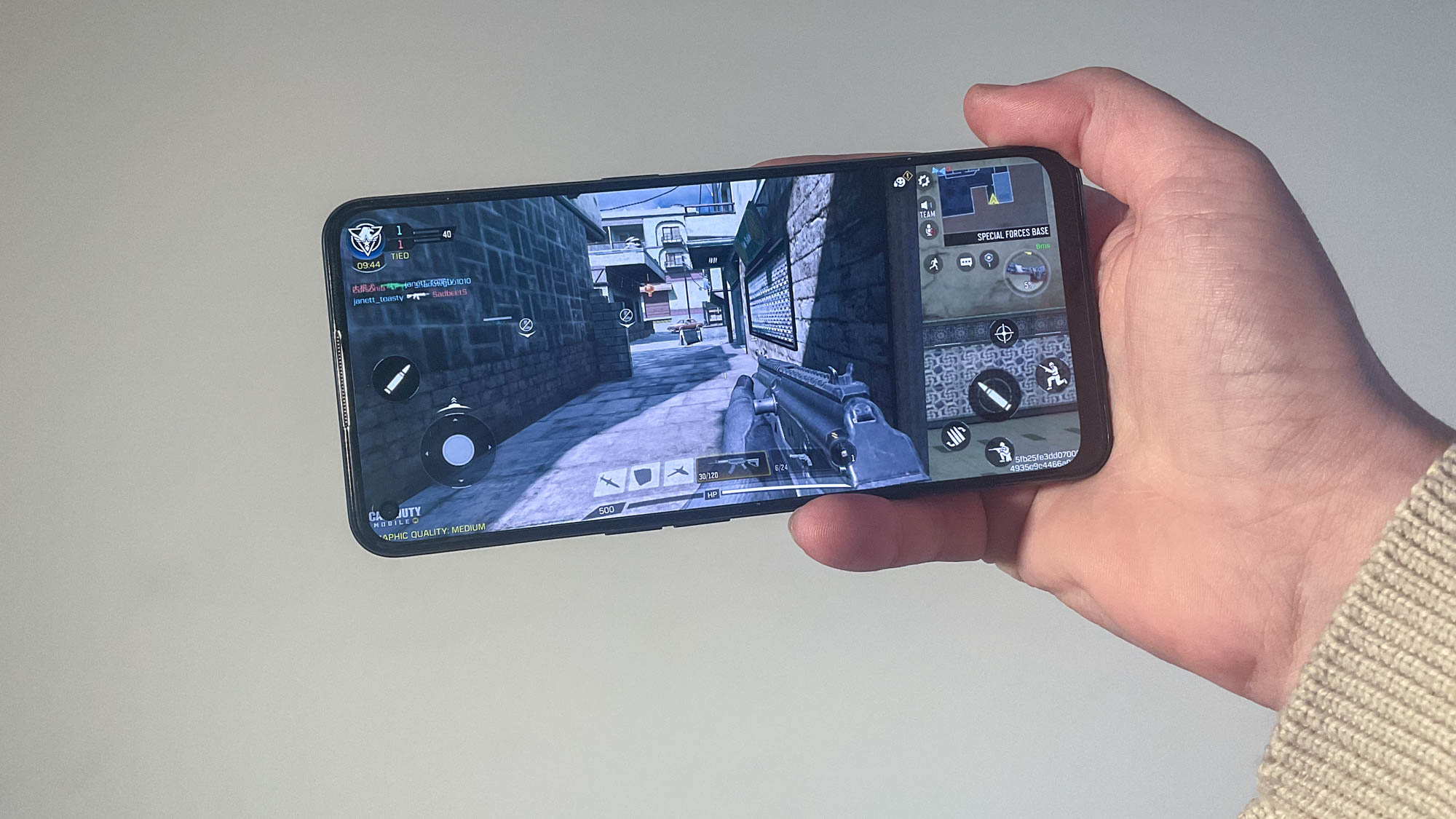
The Realme 9 Pro+ is equipped with a capable MediaTek Dimensity 920 5G processor paired with 8GB of RAM and 128GB of storage. Putting it through the same paces, I opened a couple of dozen active Google Chrome tabs while watching The King’s Man on Disney+ in a small window. I also slipped between the Chrome tabs and Call of Duty: Mobile to see how fast it could switch between the two. Fortunately, I didn’t notice any hiccups or delays in apps launching; the 90Hz refresh rate stayed smooth throughout my continuous scrolling and swipes.
Putting both phones through the Geekbench 5 test, the Redmi Note 11 Pro delivered a multi-core score of 2,018, while the Redmi 9 Pro+ scored a better 2,318. In the 3DMark Wild Life Unlimited test, the Pro+ also took the win with an overall score of 2,297 with an average frame rate of 13.8 frames per second. The Note 11 Pro clocked an overall score of 1,210 with an average frame rate of 7.3 frames per second. The latter just can’t keep up.
Interestingly, while playing a few rounds of Call of Duty: Mobile, the Pro+ automatically switched to “medium” graphic quality and to “very high” frame rates. The Note 11 Pro ran on high-graphics quality and max frame rate, showing that it's surprisingly the better smartphone to game on. This is due to the Redmi’s 120Hz refresh rate, along with a “Gameturbo” menu that lets users switch to “Performance mode” for a better experience. Still, I was able to get all the same headshots with the Realme 9 Pro+, and the differences aren’t as apparent.
The Realme 9 Pro+ outperforms the Redmi Note 11 Pro, so it takes another win.
Winner: Realme 9 Pro+
Xiaomi Redmi Note 11 Pro vs Realme 9 Pro+: Battery life and charging
With the Redmi Note 11 Pro sporting a 5,000 mAh battery with a 67W turbo charger, and the Realme 9 Pro+ offering a 4,500mAh battery capacity with a 60W SuperDart charger, you’d think that the Redmi would come out on top. However, the 120Hz refresh rate and optional performance mode can drain the battery; the Redmi’s 90Hz display doesn’t suck up as much juice.
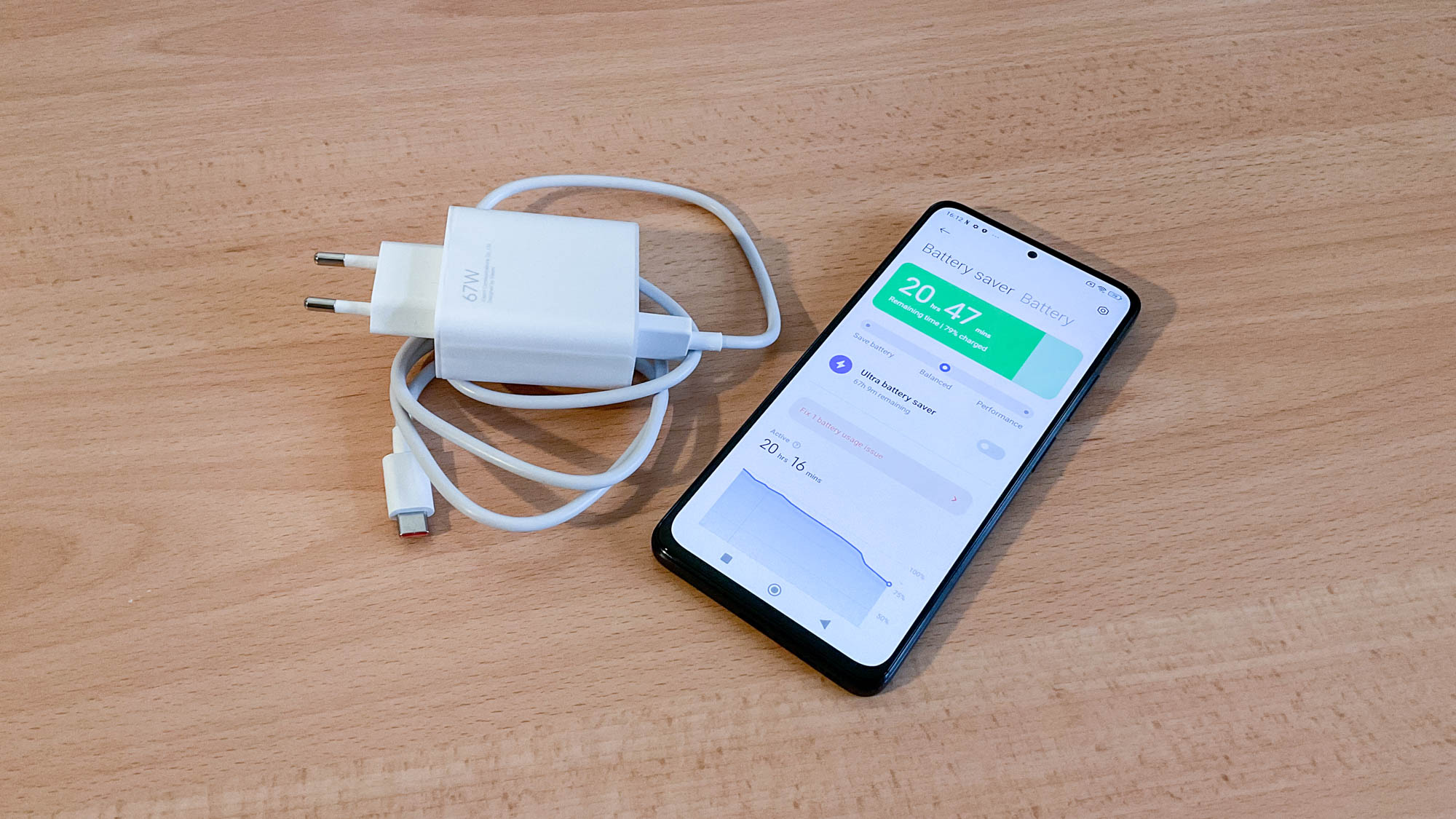
With the Realme, I was able to make it through a day of heavy usage and still have 15% left. The Note 11 Pro’s battery only went below the 10% margin after nearly a full day (just under 14 hours) of heavy usage. With moderate usage, I could eke out two days with both phones.
In terms of charging speed, I was able to charge the Note 11 Pro from 0% to 50% in around 19 minutes, while it took 22 minutes for the Pro+. The Redmi is slightly faster thanks to the 67W turbo charger, but in the real world, that four-minute difference isn’t that noticeable. Both phones have great battery life, and charging speeds are almost equally as zippy.
Winner: Draw
Xiaomi Redmi Note 11 Pro vs Realme 9 Pro+: Cameras
If Realme stuck with its usual 108-megapixel main shooter, there wouldn’t be much of a match with Redmi Note 11 Pro’s same 108MP wide camera. However, Realme changed up its camera system this time around, housing a 50MP Sony IMX766 camera with optical image stabilisation (OIS) as its main sensor. This changes the game; the Realme had a more capable camera.
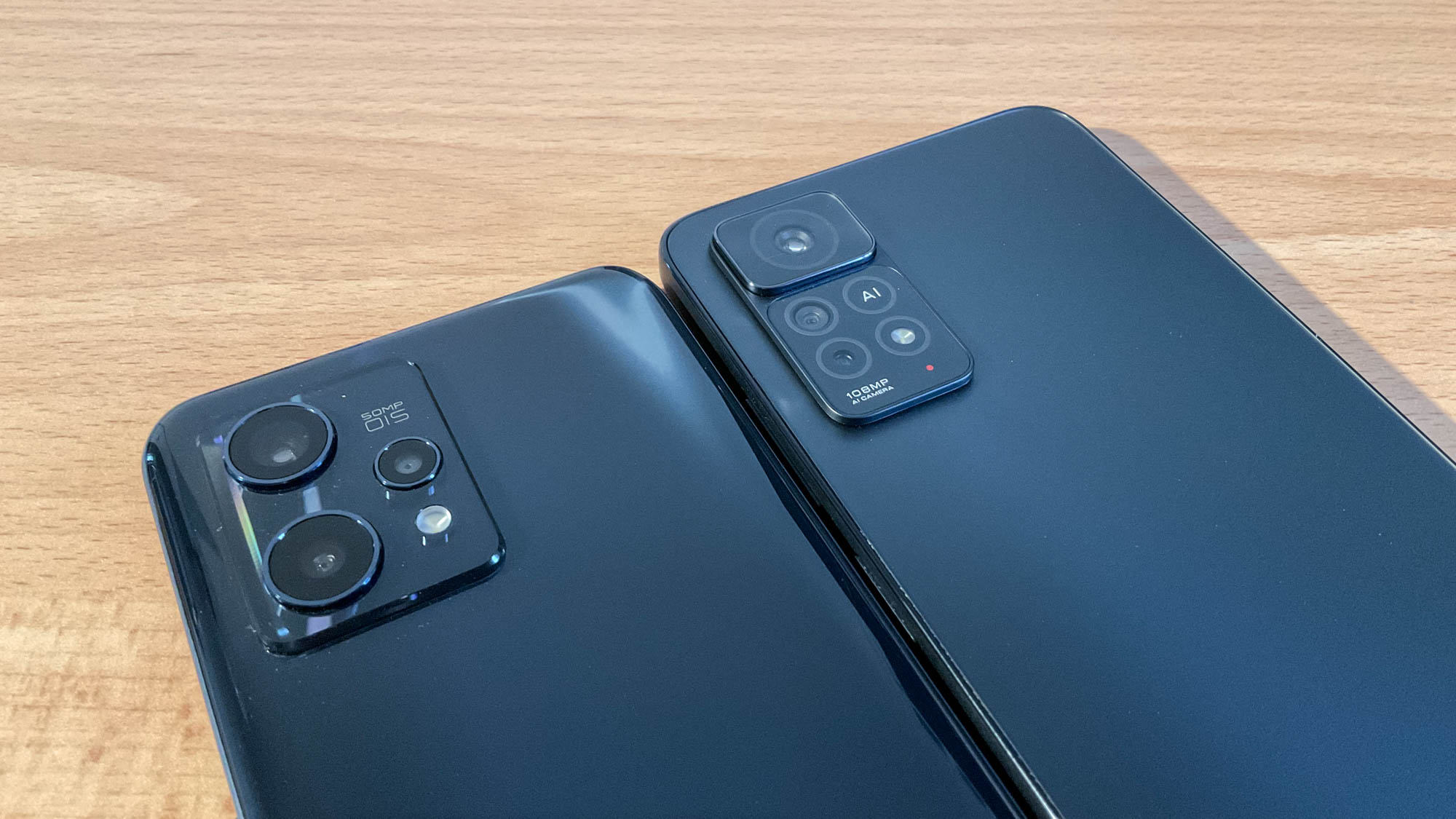
Altogether, the Pro+ is equipped with a 50MP, f/1.8 Sony IMX766 OIS wide lens, an 8MP, f/2.3 ultrawide sensor, a 2MP, f/2.4 macro, and a 16MP, f/2.5 front-facing camera. The Note 11 Pro has a 108MP, f/1.9 wide lens, 8MP, f/2.2 ultra-wide (118-degree angle) lens, and a 2MP, f/2.4 macro, along with a 16MP, f/2.4 selfie camera on the front. The numbers on the Redmi may look better, but the pictures tell a different story.

Realme 9 Pro +


As you can see with the Realme, I was able to capture the mucky weather we had that day, but each snap delivered rich detail of the near-miserable looking log bench, along with the blue sky briefly coming through in the back. The 119-degree, ultra-wide lens does a good job of capturing wide angles while still offering clear detail, although the ultrawide and macro lens’ colors were a little off when compared to the main sensor.

Xiaomi Redmi Note 11 Pro


As for the Redmi, I was impressed by the detail captured in the objects in focus, especially the yellow flowers surrounding the base of a tree. Colors are accurate, and despite it being a day with no sun in sight, I captured a bright shot with clear contrast between light and dark areas. I could further control this in the Note 11 Pro’s “Pro” mode, letting me mess around with the ISO, shutter speed, lens type and more.
That said, I found the Pro+ could capture more natural-looking shots, and didn’t have trouble with contrasts between light and dark areas. On the Note 11 Pro, each of the lenses showcased different brightness and colors, and shots seemed too dark in certain areas. That can be changed with the Pro mode, but as for those who aren’t camera savvy, it isn’t as helpful as simply taking out the Realme and taking decent shots.
Another feature the Realme has over the Redmi is that it comes with support for 4K at 30fps or up to 1080p at 120fps. The Note 11 Pro? Video support maxes out at 1080p at 30fps. If the Realme can bring 4K capabilities, there shouldn’t be anything stopping Xiaomi having the same video recording specs, too. As for the 16MP front-facing cameras, both phones are capable of capturing a decent amount of detail, but don’t expect the polished touches flagship smartphone offer.
Winner: Realme 9 Pro+
Xiaomi Redmi Note 11 Pro vs Realme 9 Pro+: Software
The Redmi Note 11 Pro falters by running MIUI 13 over an ageing Android 11, while the Realme 9 Pro+ comes with Realme UI 3.0 over Android 12. As you’ll find in our Android 12 review, we’re fans of Google’s latest OS, and it’s great to see this system updated as soon as you take the Realme 9 Pro+ out of the box. We can’t say the same for the Note 11 Pro.
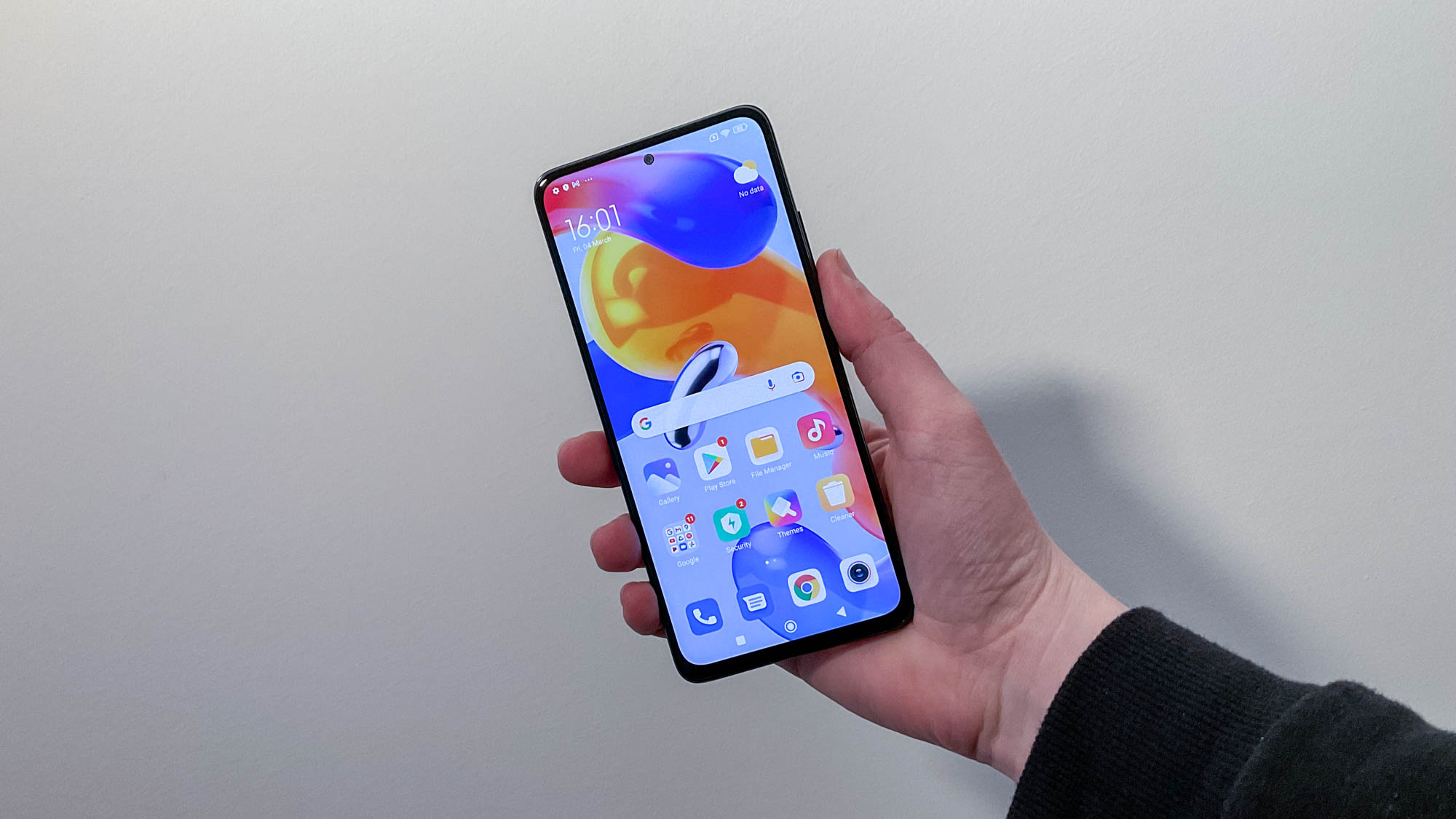
What’s worse, Xiaomi doesn't officially state the amount of software updates for each of their phones, but the Redmi Note series generally only gets one major Android update. MIUI 13 isn’t anything special either, offering the bare minimum of unique personalisation tools and an interface that feels a tad dated. There is a boat-load of bloatware when starting up the phone, which is a nuisance. A majority can be deleted, but it’s annoying having them there, especially since they seemingly need constant updates.
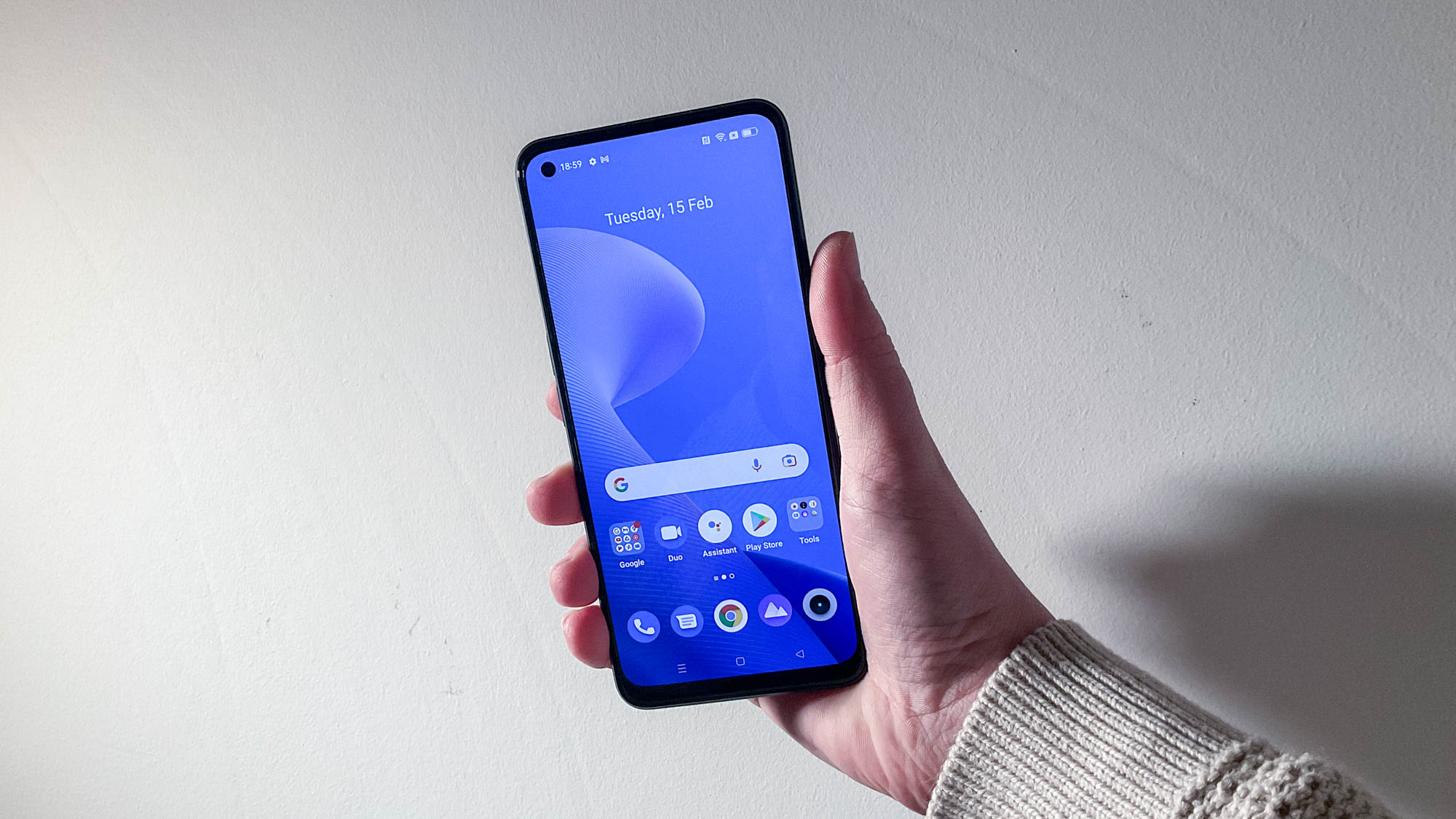
The Pro+, on the other hand, offers a much more personalised experience. From its fingerprint sensor styles to its edge lighting and live wallpapers, the OS feels more up-to-date. There is some bloatware, such as the Amazon app, along with Booking.com and Realme’s own weather and music apps, but these aren’t a hindrance compared to other budget smartphones that constantly remind you to update apps you never use.
Realme is also known to offer two major Android updates, which means you can keep hold of the Pro+ for a while longer than the Note 11 Pro.
Winner: Realme 9 Pro+
Overall winner: Realme 9 Pro+
Surprised? I know I am. Going into this, I thought the Xiaomi Redmi Note 11 Pro 5G would take the win purely because of its stunning 120Hz AMOLED display that made everything from apps to gaming look great. Plus, I thought its bigger battery and more affordable price tag would tip it over the winning line. However, it’s performance, cameras and software couldn’t keep up with the stylish Realme 9 Pro+.
There are pros and cons to both of these lightweight champions, especially if you’re after a commendable smartphone experience on a budget. For $329, the Redmi Note 11 Pro is a stellar choice you won’t be disappointed with, but at just under $400 (£299 at a discount), the Realme 9 Pro+ takes the win overall.
If you’re looking to take the leap into the heavyweight division, but aren’t sure if you should go with iPhone or Android, we asked three phone experts which is best: Android or iPhone?

Darragh Murphy is fascinated by all things bizarre, which usually leads to assorted coverage varying from washing machines designed for AirPods to the mischievous world of cyberattacks. Whether it's connecting Scar from The Lion King to two-factor authentication or turning his love for gadgets into a fabricated rap battle from 8 Mile, he believes there’s always a quirky spin to be made. With a Master’s degree in Magazine Journalism from The University of Sheffield, along with short stints at Kerrang! and Exposed Magazine, Darragh started his career writing about the tech industry at Time Out Dubai and ShortList Dubai, covering everything from the latest iPhone models and Huawei laptops to massive Esports events in the Middle East. Now, he can be found proudly diving into gaming, gadgets, and letting readers know the joys of docking stations for Laptop Mag.
